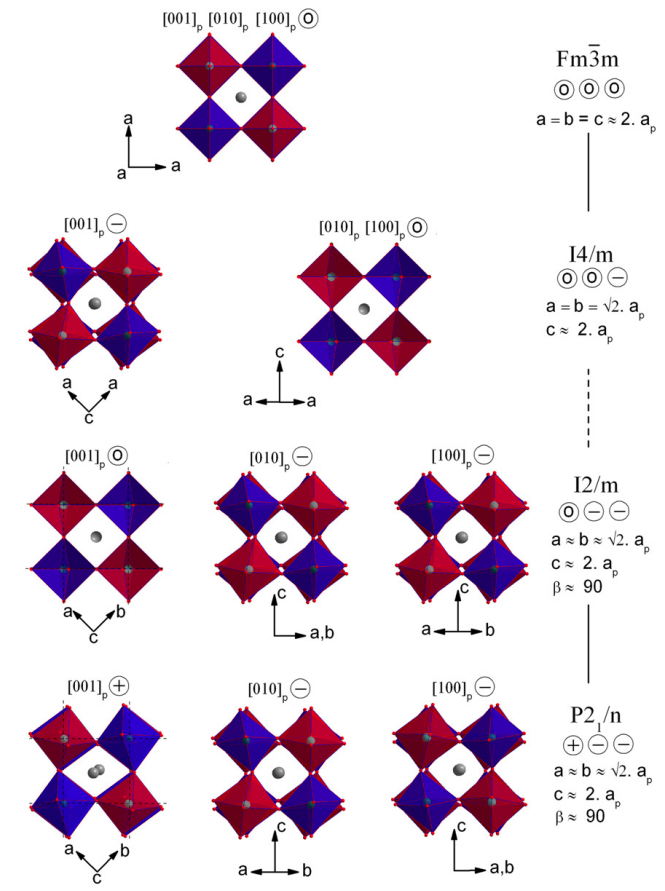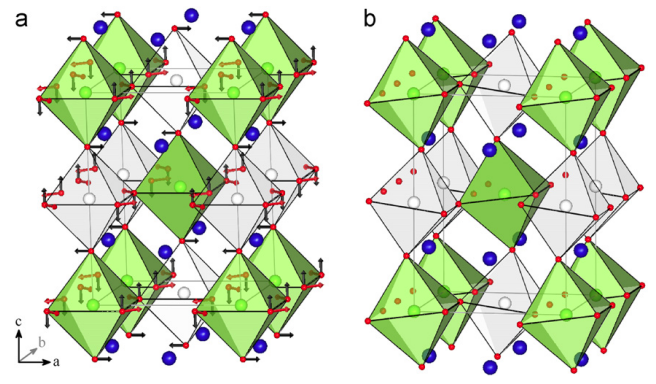Nomenclature
Nomenclature¶

Fig. 11 Tilts: Glazer’s Notation
Projections along the cubic (simple) perovskite axes, ([100] \(p_{p}[010]_{p}\) and \([001]_{p}\) ), of an unit cell section of the structure of Sr \({ }_{2} \mathrm{ScSbO} \mathrm{S}_{6}\) in the \(F m \overline{3} m, I 4 / m\), \(/ 2 / m\) and \(P 2_{1} / n\) space groups showing in-phase ( \(+\) ), out-of-phase \((-)\) rotations. \(\mathrm{ScO}_{6}\) octahedra are shown in red, \(\mathrm{SbO} \mathrm{O}_{6}\) in blue and \(\mathrm{Sr}\) atoms in grey. Each structural transition corresponds to the appearance or/and the disappearance of these rotations. (For interpretation of the references to color in this figure caption, the reader is referred to the web version of this article.)¶

Fig. 12 Symmetry Adpted Modes. Scheme of the polarization vectors of the six different irrep distortion components of the \(F m \overline{3} m\) space group that can take part in the symmetry breaking from that space group to the room-temperature \(P 2_{1} / n\) monoclinic space group: \(G M^{3+}(\mathrm{a}), G M^{4+}(\mathrm{b}), G M^{5+}(\mathrm{c}), X^{2+}(\mathrm{d}), X^{3+}(\mathrm{e})\) and \(X^{5+}(\mathrm{f})\).¶

Fig. 13 Symmetry Adpted Modes. Representation of the new configuration resulting from the coupling of the unidimensional \(G M^{4+}\) and \(X^{3+}\) modes with the \(a^{+} b^{-} b^{-}\)tilting scheme associated to \(P 2_{1} / n\) : the atomic displacements implied by the two coupled primary modes can be interpreted, precisely, as the rotations (tilts) of the octahedra.¶
